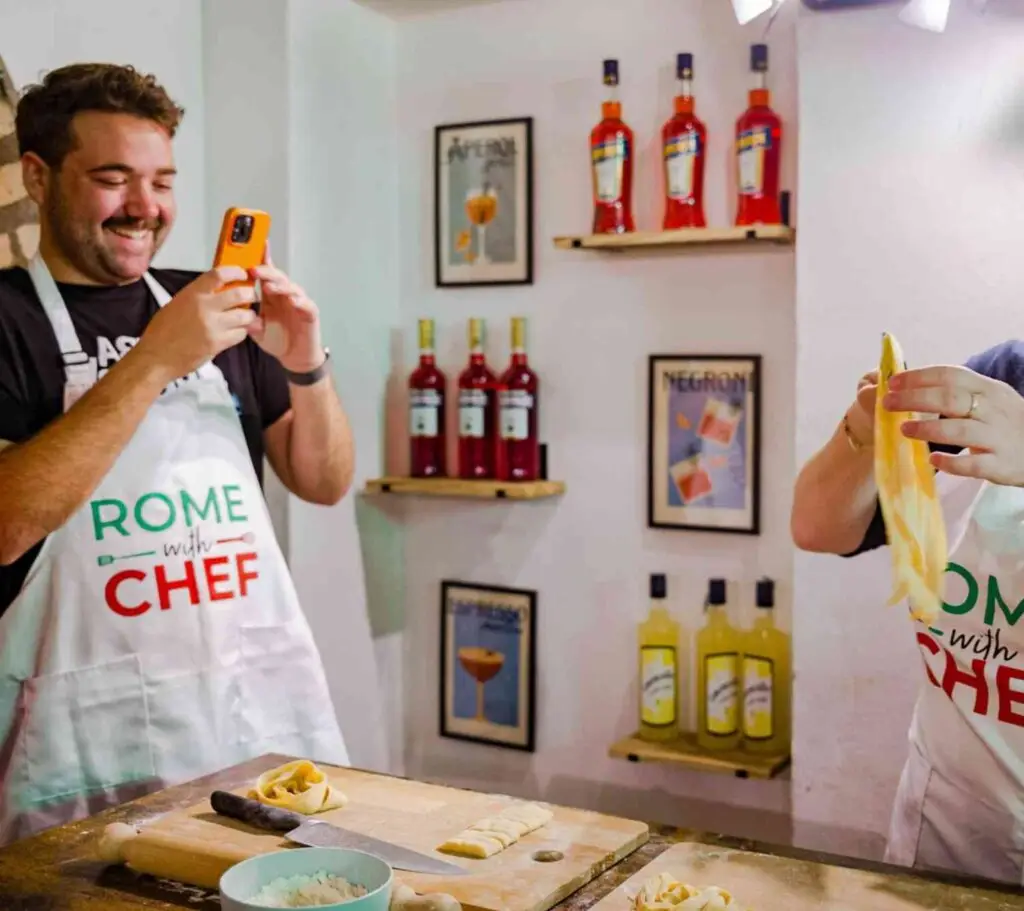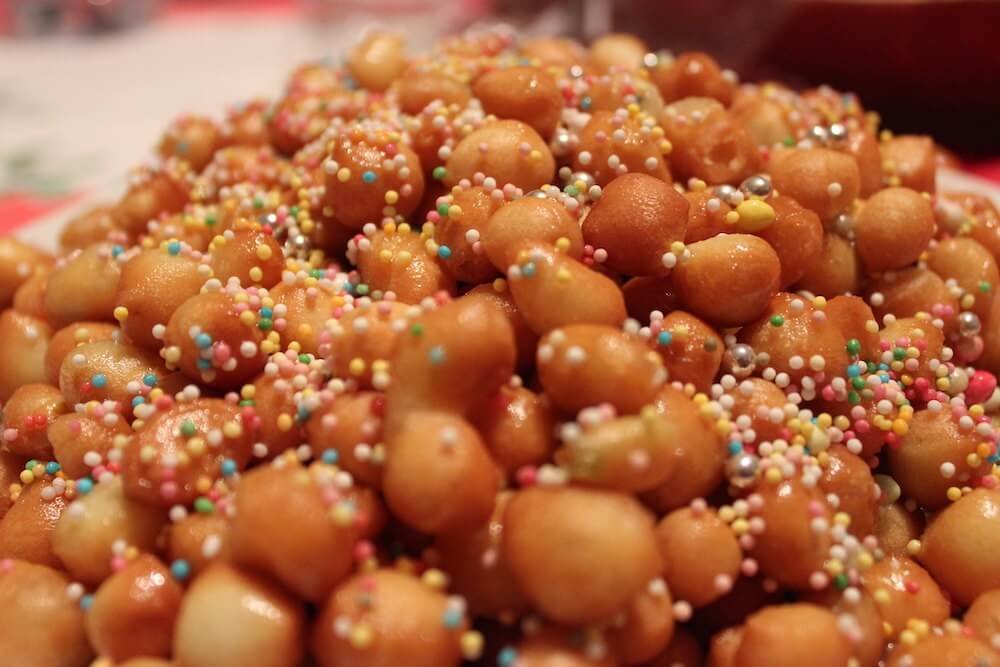Cacio e pepe, carbonara, amatriciana and gricia. All of us have heard of at least one of these Roman pasta dishes, but did you know that they originated in (or around) the Italian capital?
This article breaks down each of these recipes: from the creamy carbonara to the tomatoey amatriciana. You’ll learn how they’re made, where they originate, and where to try them in Rome. Oh, and if you love getting creative in the kitchen and adding to your culinary repertoire, come and join us for a cooking class in Rome and learn how to wow friends and family by making these Roman pasta dishes yourself!
Cacio e Pepe: The Simplest of Roman Pasta Dishes
Cacio e pepe is minimalist brilliance, and the most faithful representation of simple Roman cooking. It consists of little more than salty pecorino romano cheese and ground black pepper, mixed into a sauce of salted pasta water flavoured by long, thin noodle pasta like spaghetti or bucatini.
Cacio e pepe has become the darling of restaurant pasta menus, taking the US by storm over the past few years. It featured on 48% more menus by the end of 2022 than it did four years earlier, and has infused and inspired recipes beyond pasta, including spreads, flatbreads and pizzas.
The best place to learn how to make cacio e pepe is our Private Pasta & Tiramisù Cooking Class in the centre of Rome.
Otherwise, click here for some restaurant recommendations.
Carbonara: A Creamy Delight (Without the Cream)
That’s right, you don’t put cream in a traditional carbonara.
Instead, carbonara is traditionally made with guanciale (pork cheek), pecorino cheese, and raw egg yolk. The fat from the pork cheek, strong cheese, and rich egg yolk combine to form a rich glossy sauce that coats your spaghetti, fettuccine, or rigatoni pasta.
To make an authentic carbonara recipe you need to use egg yolks. Just don’t add the egg whites, otherwise you’ll get a scrambled egg sauce!
Carbonara is the most popular pasta dish we make in our Spritz & Spaghetti Cooking Class in Rome.
Amatriciana: A Flavorful Fusion of Tomato and Pork
Originating from the town of Amatrice about 150 km northeast of Rome, amatriciana is a meaty, tomato-based pasta sauce which is the messiest (but most family-friendly) of the Roman pasta dishes to make at home.
A traditional amatriciana recipe includes just three ingredients: chopped guanciale (pork cheek), chopped tomatoes and pecorino cheese, generously seasoned with salt, pepper and even chili pepper flakes.
Gricia: The Humble Ancestor of Carbonara
Gricia is what you get when you remove the egg from a carbonara (or add pork cheek to a cacio e pepe). It’s the least famous of the four Roman pasta dishes, but also the most popular among Romans, who tend to prefer simplicity over complexity in the composition of their pasta recipes.
Seasonal Roman variations include gricia con carciofi (gricia with artichokes) which is, in our opinion, the most indulgent autumnal pasta dish for its rich combination of tangy pecorino cheese, salty pork and sweet aftertaste evoking artichoke.
Where to Try These Roman Pasta Dishes in the Italian Capital
For those of you looking to try these Roman pasta dishes in the city in which they originated, Rome offers a plethora of options. Rome with Chef has published an essential guide to the best pasta restaurants in Rome. Or just check out the map below and add them to your itinerary!
Ready to immerse yourself in Italian cuisine?
👉 Book your Family-Friendly Pasta & Tiramsiù Class
👉 Combine Handcrafting Pasta with Mixing 3 Cocktails on our Spritz & Spaghetti Class
Still need convincing? Check out these testimonials tastetimonials:







